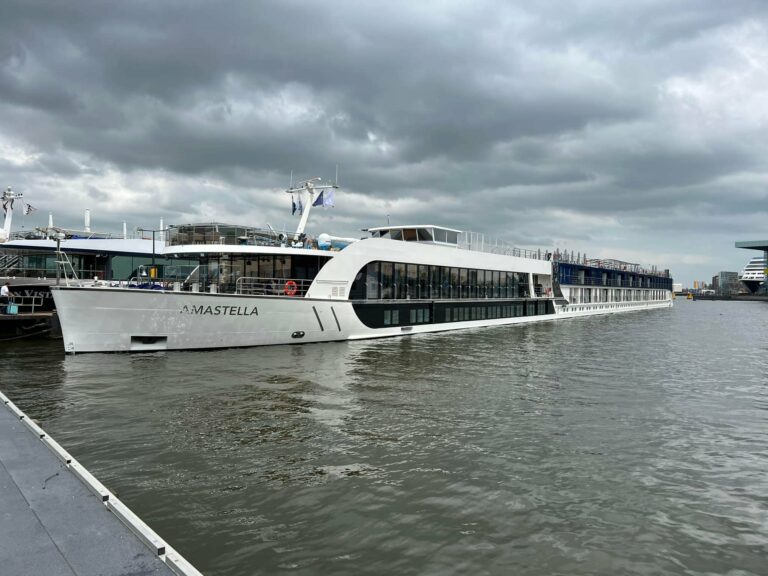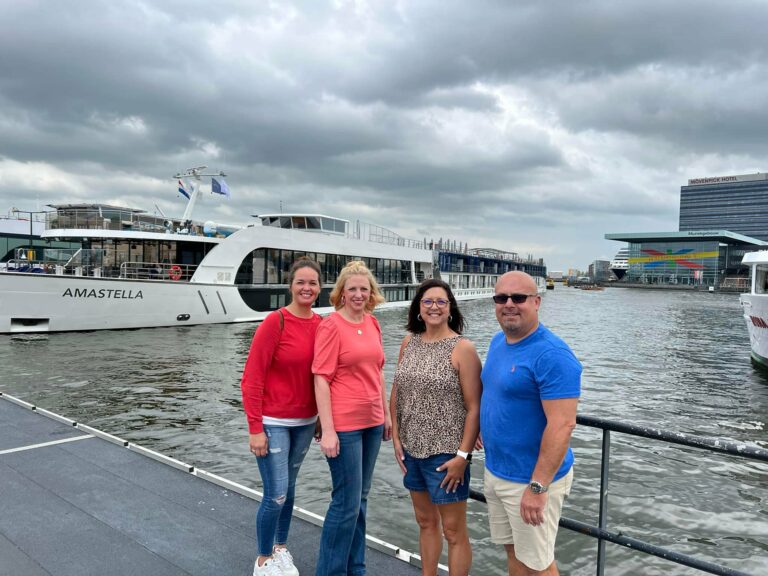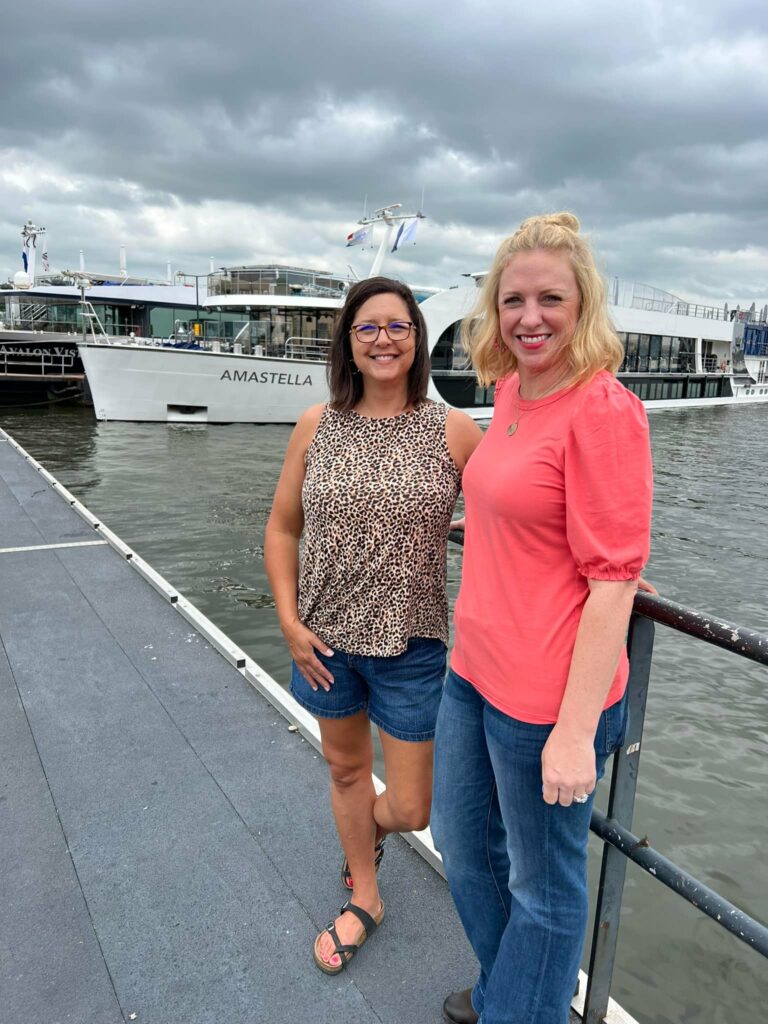Why Ask Me to Plan Your Next Trip
Why Use a Travel Agent: The Benefits of Professional Assistance for Your Next TripPlanning a trip ca...
Independent Travel Agent
Email Me Travel Inquiry Form Registration Form | Payment Form | Travel Lead FormWant the latest travel news, deals and more? Sign-up for my newsletter!
 We flew out a day before the cruise and did a little sightseeing in Amsterdam. I highly recommend doing this to get acclimated to the time change. We took a canal cruise which was interesting, but not recommended if you have jet lag! The warm sun made my eyelids heavy and I am sure I missed a thing or two!
We flew out a day before the cruise and did a little sightseeing in Amsterdam. I highly recommend doing this to get acclimated to the time change. We took a canal cruise which was interesting, but not recommended if you have jet lag! The warm sun made my eyelids heavy and I am sure I missed a thing or two! Castle De Haar was once the private residence of the Van Zuylen family, whose descendants still stay here yearly. The castle also frequently hosted members of the international jet-set with their lavish lifestyle; from Coco Chanel to Roger Moore, they too left their mark on the plush rooms of the most beautiful spot in Utrecht.
Castle De Haar was once the private residence of the Van Zuylen family, whose descendants still stay here yearly. The castle also frequently hosted members of the international jet-set with their lavish lifestyle; from Coco Chanel to Roger Moore, they too left their mark on the plush rooms of the most beautiful spot in Utrecht. After this, we had free time to explore. We ate waffle fries, bought and tasted some chocolate, visited the smallest bar in Ghent (which used to be a jail) and then off to visit the Gravenstein Castle. The moated castle was built by Count Phillip of Alsace in 1180. I am so impressed with how well these castles have stood the test of time. When I think about how long ago they were built with no modern way of constructing such a large building, it really is amazing!
After this, we had free time to explore. We ate waffle fries, bought and tasted some chocolate, visited the smallest bar in Ghent (which used to be a jail) and then off to visit the Gravenstein Castle. The moated castle was built by Count Phillip of Alsace in 1180. I am so impressed with how well these castles have stood the test of time. When I think about how long ago they were built with no modern way of constructing such a large building, it really is amazing! Our day in Antwerp was spent participating in a walking tour of the city and ending our time with a Belgium beer tour! We saw the beautiful Cathedral of Our Lady, Steen’s Castle, Grote Market and Brabo Fountain. This particular city paid homage to the Virgin Mary. Citizens from long ago would place a statue of the Virgin Mary on a light post so they would not have to pay taxes! Some statues were elaborate and some very simple, but all placed for the same reason. We ended our day with a beer tour tasting local beers. Some were good, others not so much! After all that beer, I finally found my Belgium waffle! It was delicious!
Our day in Antwerp was spent participating in a walking tour of the city and ending our time with a Belgium beer tour! We saw the beautiful Cathedral of Our Lady, Steen’s Castle, Grote Market and Brabo Fountain. This particular city paid homage to the Virgin Mary. Citizens from long ago would place a statue of the Virgin Mary on a light post so they would not have to pay taxes! Some statues were elaborate and some very simple, but all placed for the same reason. We ended our day with a beer tour tasting local beers. Some were good, others not so much! After all that beer, I finally found my Belgium waffle! It was delicious!








Back by popular demand! Download our FREE ULTIMATE Guide to AmaWaterways. We are an AmaWaterways River Cruise Specialist Agency, ready to create your perfect itinerary! Our over 120 page page guide to river cruising through Europe, Asia & Africa. The latest on ships, new destinations and itineraries. More information about their award winning fleet, RHINE CASTLES & SWISS ALPS, VINEYARDS OF THE RHINE & MOSELLE, ESSENCE OF BURGUNDY & PROVENCE, AFRICA SAFARIS & WILDLIFE CRUISE
My name is Tami Durant-West and I live in central Minnesota with my husband, two sons, two dogs and two cats. I have been in the travel/hospitality industry for over 12 years, for both individuals and groups. We love to travel as a family and being from a cold climate we gravitate toward warm destinations as often as possible. My husband is from London, England so I'm partial to villages in the English countryside as well. Before meeting my husband, I had traveled throughout the United States, Mexico, and the Caribbean; as well as an extended time in Spain. My specialties are Mexico (All-Inc... Read More >>>
An expert destination wedding travel agent near me with five star luxury travel packages with a luxury travel company, Vincent Vacations.
Want the latest travel news, deals and more? Sign-up for my newsletter!
Want to stay in the loop? Follow Tami Durant-West on all the socials!
Learn more about destinations, interests, and supplier partners for online travel agent Tami Durant-West.
how to become a travel agent or how to become a Disney travel agent or what's the best travel agent host agency?
Why Use a Travel Agent: The Benefits of Professional Assistance for Your Next TripPlanning a trip ca...
Accessible Travel Tips: Making Your Journey Inclusive and EnjoyableTraveling is one of the most rewa...
In business for over 10 years, we are your #1 source for travel!
See more